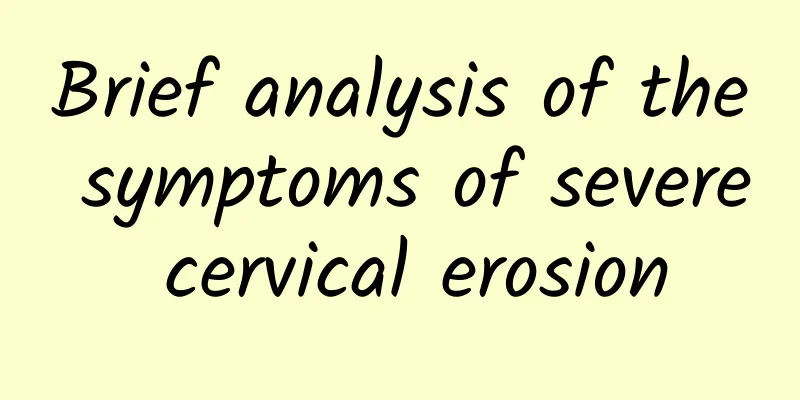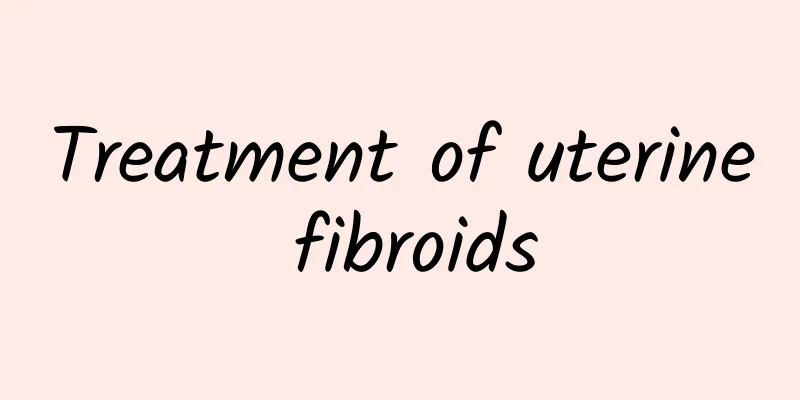What medicine can cure small uterine fibroids? Take these 3 medicines now

|
What medicine should be taken for uterine fibroids? Experts point out that according to the type of medicine and its usage, there are mainly LHRH agonists, which are a new type of anti-gynecological drug in recent years. Its effect is similar to "medical ovarian removal" and can shrink fibroids. Its effect is short-term and reversible. Androgens, antagonists of estrogen, control uterine bleeding (excessive menstrual flow) and prolong the menstrual cycle. Danazol has a weak androgenic effect, which reduces the estrogen level in the body and inhibits endometrial atrophy and amenorrhea. Mifepristone has anti-progesterone, glucocorticoid and slight anti-estrogen effects. Progesterone is an antagonist of estrogen to a certain extent and can inhibit its effect. diagnosis Uterine fibroids are often discovered incidentally during a routine pelvic exam. Your doctor may feel that the shape of your uterus is abnormal, suggesting the presence of fibroids. If you have symptoms of uterine fibroids, your doctor may order these tests: Ultrasound. Your doctor may order an ultrasound if confirmation is needed. It uses sound waves to get pictures of the uterus to confirm the diagnosis and to map and measure fibroids. The doctor or technician moves the ultrasound device (transducer) across the abdomen (transabdominal) or places it in the vagina (transvaginal) to get images of the uterus. Lab tests. If you have unusual menstrual bleeding, your doctor may order other tests to investigate potential causes. These may include a complete blood count (CBC) to determine if you have anemia from chronic blood loss and other blood tests to rule out bleeding disorders or thyroid problems. If a traditional ultrasound doesn't provide enough information, your doctor may order other imaging studies, such as: Magnetic resonance imaging (MRI) This imaging test can show the size and location of fibroids, identify different types of tumors, and help determine appropriate treatment. Hysteroscopy Hysterosalpingogram. A hysterosalpingogram (HSG) uses a dye to highlight the uterine cavity and fallopian tubes on an X-ray. Your doctor may recommend this if infertility is a concern. In addition to showing fibroids, it can help your doctor determine if your fallopian tubes are open. Hysteroscopy. For this, your doctor inserts a small telescope called a hysteroscope through your cervix and into your uterus. Your doctor then injects your uterus with saline solution to expand your uterine cavity and allow the doctor to examine your uterine walls and fallopian tube openings. 1. LHRH agonist (LHRHA) or GnRHa is a new type of anti-gynecological drug in recent years. Its effect is similar to "drug-induced ovarian removal" and can shrink fibroids. Its effect is short-term and reversible. LHRH-A is mostly used for intramuscular injection and can also be used for subcutaneous injection. It is injected intramuscularly from the day of menstruation for 3 to 4 consecutive months. The dosage, route of administration and time of the menstrual cycle are determined by the specific drug. Symptoms are relieved and anemia is corrected, but the fibroids grow again soon after stopping the drug. Natural menopause is achieved within a limited time. For example, for those who want to preserve fertility, when the fibroids shrink, local blood flow decreases, thereby reducing bleeding during surgery and reducing the scope of surgery; or for fibroids that originally affected the fallopian tube opening, the fibroids shrink after treatment, making the blocked fallopian tubes unobstructed and increasing the pregnancy rate. Adverse reactions include hot flashes, sweating, vaginal dryness or bleeding disorders, and osteoporosis may occur due to low estrogen effects. 2. Androgens counteract estrogen, control uterine bleeding (excessive menstrual flow) and prolong the menstrual cycle. Long-term administration at regular doses has no adverse reactions and can stop bleeding in near-menopausal women entering menopause. The use of androgens can not only stop the growth of fibroids, but also cause 1/3 to 1/2 of the patients' fibroids to degenerate, shrink and become smaller. Because androgens cause water and salt retention, they should be used with caution or avoided in patients with heart failure, cirrhosis, chronic nephritis, edema, etc. Because some scholars believe that the occurrence of fibroids may also be related to androgens, some tend not to use androgens. 3. Danazol has a weak androgenic effect, which reduces the estrogen level in the body and inhibits endometrial atrophy and amenorrhea; at the same time, fibroids also shrink and become smaller. However, for young people, menstruation can resume after 6 weeks of discontinuation of the drug, so repeated use is required. Adverse reactions include hot flashes, sweating, weight gain, acne, and elevated liver transaminases (liver function should be checked before and after medication), which can be restored after 2 to 6 weeks of discontinuation of the drug. |
<<: Symptoms of uterine fibroids: 4 self-examination methods to help you understand your body
>>: Insufficient blood supply to uterine fibroids can cause various changes
Recommend
How to treat cervical hypertrophy?
How to treat cervical hypertrophy? Experts say: S...
What should I do if I have abdominal pain and back pain after miscarriage?
What should I do if I have abdominal pain and bac...
Can pelvic effusion cause menstrual irregularities?
Pelvic effusion is mainly caused by inflammation ...
Eat to prevent the epidemic and build immunity! Nutritionist: Plant protein, vegetables and fruits are essential for antioxidants
Now is the time to prevent and control the novel ...
Artificial abortion is very harmful. How to take care of yourself after surgery? These 6 things are very important.
In the clinic, we will meet many women who are pr...
What methods can effectively treat cervical erosion? 5 measures are most effective in treating cervical erosion
Cervical erosion is a common gynecological diseas...
Surgical treatment of Bartholinitis
Bartholinitis in women is mostly caused by an inf...
The red warning signs of early ectopic pregnancy need to be identified as soon as possible
Ectopic pregnancy is a dangerous gynecological ac...
Dietary care for patients with uterine fibroids
Uterine fibroids are a common gynecological disea...
What are the symptoms of cervicitis
Cervicitis is one of the common gynecological dis...
Experts explain the main causes of dysmenorrhea
In real life, women with poor physical fitness ar...
What is pelvic peritonitis
Pelvic peritonitis is a disease caused by severe ...
Should I take Motherwort or New Biopharmaceutical Granules after a miscarriage? Take under the guidance of a doctor
After an artificial abortion, the wound surface o...
How harmful is cervical erosion?
Cervical erosion is a common gynecological diseas...
Diet therapy for menopause
What are the dietary methods for treating menopau...









